Geoff Squire, the founder and editor of the Living Field recently joined a working group of the Society for Experimental Biology (SEB) whose remit is to develop Outreach, Education and Diversity. Here he writes about his experience in the Living Field project, based at the James Hutton Institute, Dundee UK. But first … some appreciative recollections of the SEB’s influence on his earlier work linking biological process to regional and global sustainability.
The SEB has for decades given encouragement and opportunity to early-career researchers, in my case first as a doctoral student with Terry Mansfield at Lancaster and then throughout a long association with John Monteith, Mike Unsworth, Paul Biscoe and colleagues at Nottingham. The group there comprised mostly physicists, but supported an array of post-docs and students from other disciplines. The pervading ethos was ‘different therefore equal’ – a group ethic that strongly influenced my subsequent collaborations across disciplines and continents.
It was an exciting time at Nottingham – the ‘big leaf’ theories of measuring and modelling environment flux were instructive at certain degrees of scale and complexity – large flat areas of uniform vegetation – but some physicists and biologists sought to apply flux-based approaches to finer assemblages of functional types and individual organisms. The main generic question being asked was ‘how do differences between individuals propagate through time and space to affect the properties of populations, landscapes and ecosystems’, and in reverse, ‘how to the characteristics of large scales constrain the possibilities for individual performance’.
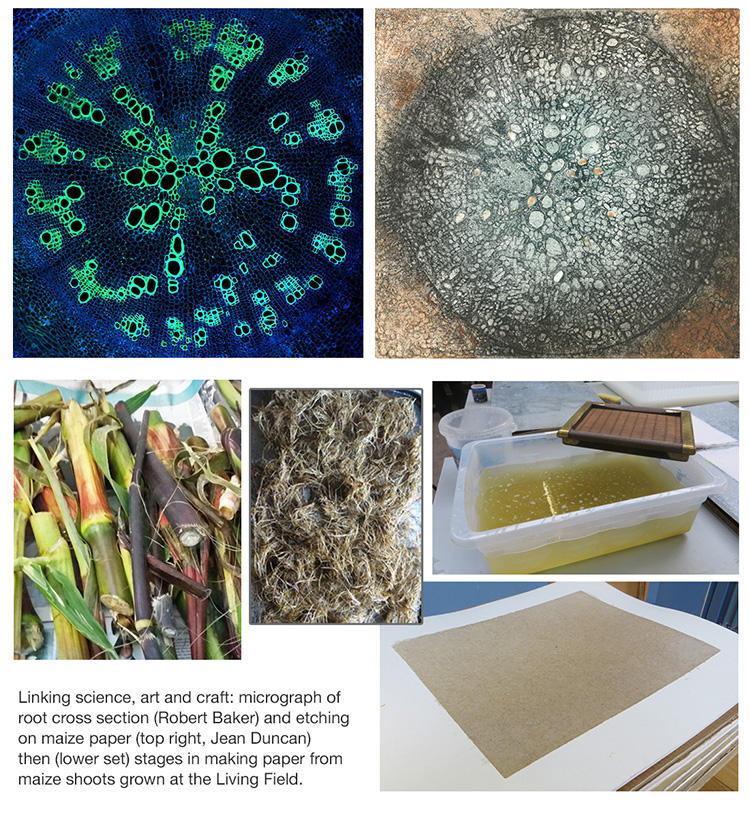
In the early 1990s, I joined a group of physicists and biologists at the then Scottish Crop Research Institute (now the James Hutton Institute) whose interest, like mine, was on the ‘individual’ in the ‘group’ – individuals being ‘different therefore equal’ – in terms of the need to include them in experiments and models. Crucial to the development of the subject was the 1994 SEB seminar “Scaling up : from cell to landscape”, published 1997 as SEB Seminar Series 63 [1]. The whole debate and its intricacies around up-scaling gave a such as buzz at the time and an influence that remains to this day.
Origins of the Living Field
The issues in up-scaling from experimental chambers, plots and fields to catchments and landscapes became a major part of the work at SCRI/JHI. Understanding, and then predicting, the consequences for ecosystem function of many small plant-by-plant or field-by field changes continued to be challenging, whether directed at reducing further loss of biodiversity or ensuring food security in uncertain times.
It was evident from SEB Seminar Series 63 and subsequent spin-off debates that biophysical science had to incorporate social, economic and political science if it was to make progress with global challenges. It was not enough to say ‘here’s the biophysical, now you get on with it’.
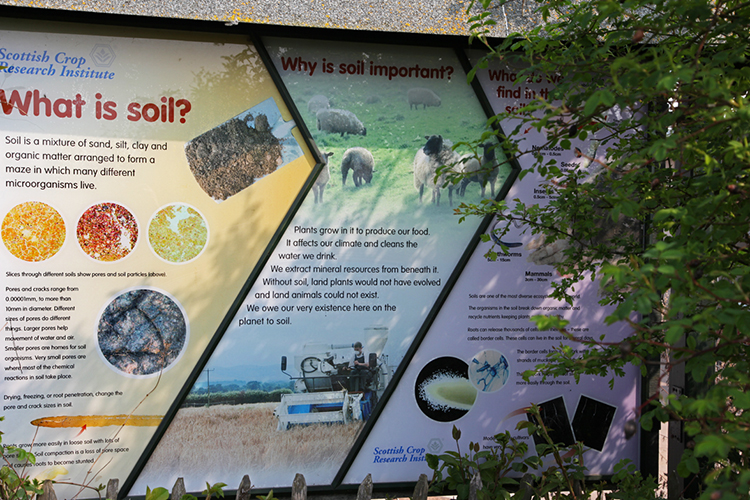
In this melee, two distinct influences led to the formation of the Living Field. One was the uncertainty in public understanding of genetic modification and geneflow, topics that intensified in the late 1990s with the beginning of large-scale GM crop trials in the UK [2]. Several of us at SCRI ran geneflow roadshows, at the Edinburgh Science Festival for example, but when talking to people on these issues, it was clear that much more and more accessible information was needed on things like soil, plants, microbes, functional biodiversity, food webs, and the movement of living things across a landscape.
The second influence was more of a jolt. At a scientific meeting in the late 1990s (not SEB!), the view was promoted by some that modern agricultural fields need be nothing beyond dead, industrial deserts. Such a position had already gained widespread acceptance in some countries and was permeating UK agriculture. That fields could be dead and productive was impossible, yet many agricultural interests were heading that way. So No Dead Desert was a possible title, but I settled on the more positive Living Field.
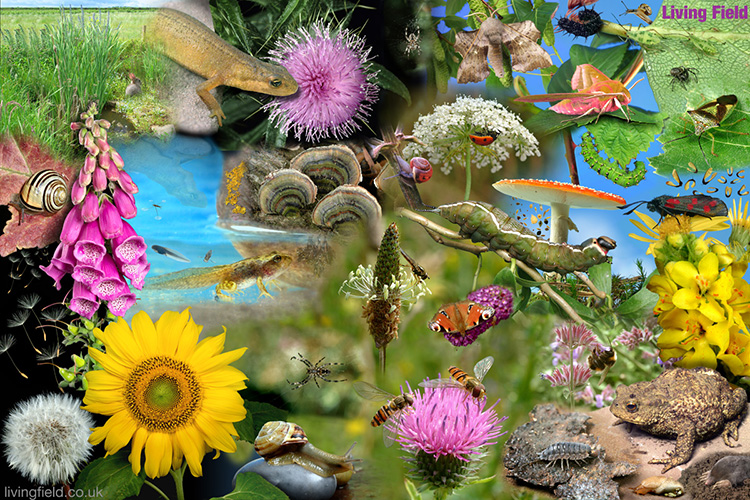
The Living Field garden and study centre
Though the name was coined in 2001, the direction and scope of the project evolved gradually. Unfunded at first, ideas and physical labour were given freely by staff and students. One of the first challenges was the need for a physical base – a place to grow and nurture plants and their attendant microbes and animals, most of which had become scarce to a degree that few people were able to see, on a walk or drive, no more than a small fraction of the biodiversity that once thrived in the croplands.
The Institute provided a small area of land which farm and science staff converted to microhabitats – meadow, woodland, hedgerow, pond and ditch – and areas for growing crops, including those current and the many species that had once been farmed or gathered but were no longer appreciated, grown and used. Among the latter were ancient cereal species and landraces, forage legumes, dye plants, fibres, medicinals and useful ‘weeds’.
The Living Field garden was formally opened in 2004 [3]. Since then it’s been accessible to the public at all times. Within a few years, the garden came to support hundreds of plant species, many of which came in of their own accord, finding space in the low-input meadow for example.
The assemblage of plants and associated invertebrates allowed a sort of scaling over time (as well as space ) – people could see the crops and useful wild plants that were once grown, the contraction to the ones now grown and the potential of those that could be grown or encouraged in future regeneration. And the presence of real plants provided opportunity to scale-down, for example to show how species differed in fine root structure and function and to examine the plant-rhizobia symbiosis in nitrogen-fixing legumes.

Outreach – Education – Diversity
The OED have not been intentionally distinguished in the Living Field project. Perhaps the main drive was outreach to schools and to the wider community. Through early experience, Gladys Wright [4] and other contributors instilled the practice at open days and road shows to cater first for primary age children. If they were happy and occupied, then their older relatives and friends could immerse themselves in the exhibits and talk to staff. Events in the garden, for example, always had a ‘finding’ or ‘making’ game for children, then more thoughtful exhibits for grown-ups.
A consistent method of working took hold in which an initial scientific object – perhaps of little interest to the public in itself – was explored through activities that visitors could be part of and themselves develop. Artists and craftworkers from the wider community were encouraged to become embedded in the Living Field to foster this extension of an initial object or thought.
The artist Jean Duncan’s depiction of roots and seedlings gives an example – an original root section was used as a model for a series of etchings that were printed on paper made from plants grown in the garden [5]. A path could be traced from a growing, touchable plant, its structure (e.g. fibres), then the process of converting structure to something useful (e.g. paper), and finally design and printing on the paper of attributes crucial to the plant’s functioning and survival (xylem, phloem, etc.)
Other examples included cyanotyping to reveal form and texture, colouring with plant dyes and working the stages from grain to plate (or seed to sewer as some liked to call it).
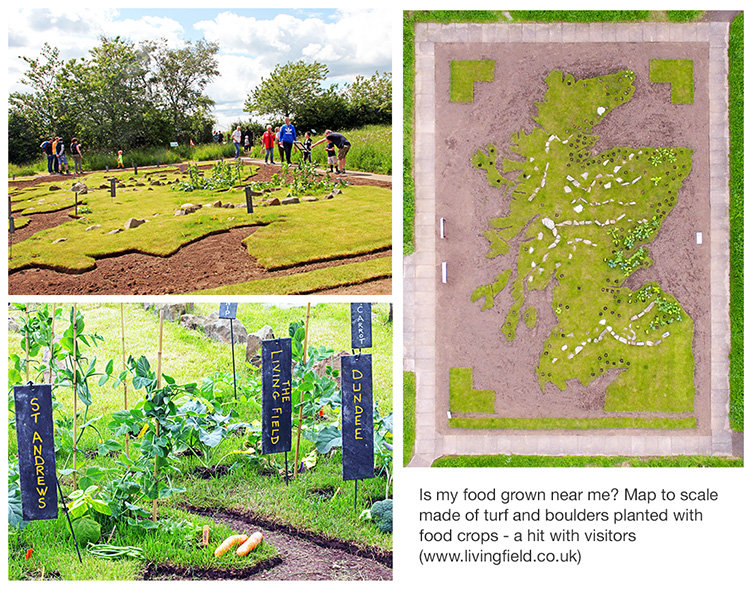
University education
University education, though not a primary aim, was fostered through visiting students and project work. While many MSc and PhD students based at the Institute contributed at open events, some worked more directly of specific projects. For example, a student from Durham University, Sarah Doherty, spent almost a year at the Institute working on food systems, especially the Beans on Toast project which dissected the constituents of this meal and traced the geographical origins and water footprint of the 10 or more crops that go into it [6]. She devised a Beans-on-Toast roadshow for primary schools, from which it was clear to see that such young minds could appreciate complex food supply chains. In drawings, some of the children depicted beans as individuals rather than a mush – an appreciation of the ‘individual in the group’ perhaps?
In other work, a project-group of students from Abertay University, Dundee worked with scientists in seed ecology and morphology to construct a key to weed species, based on shape, colour and texture of seeds and seedlings. The key was used online by the public and arable seedbank researchers for many years. And then a student visiting from AgroParisTech, Marion Demade, used her drawing skills to illustrate Reno the Fox’s musings on modern life, persecution and land use.
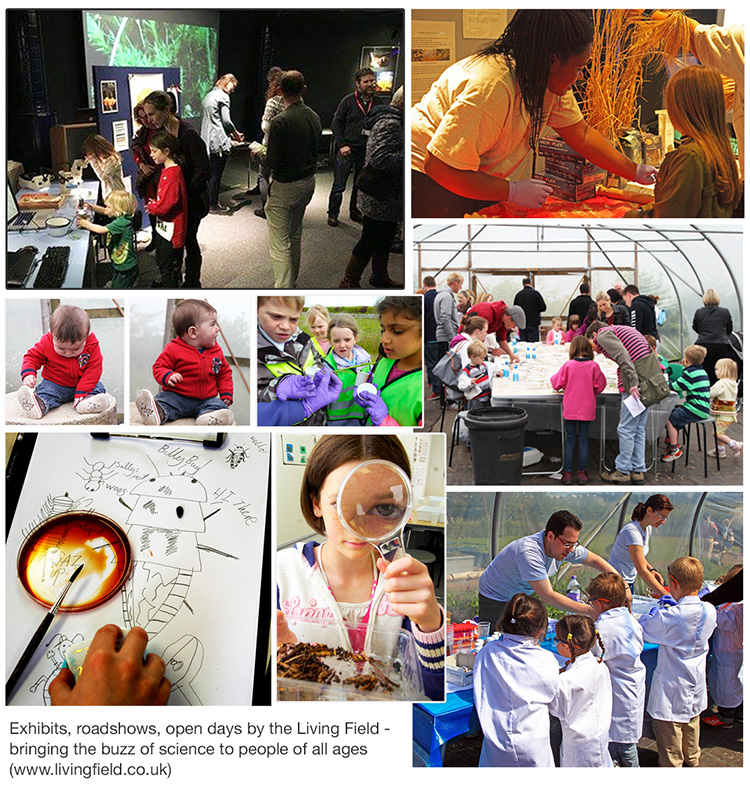
Diversity and inclusion
Diversity was not considered specifically, but in retrospect, it was there from the beginning. Essential contributions were made by colleagues from all parts of the Institute – from farm, glasshouse, graphics, technical and scientific interests. The farm and science staff built the garden from scratch and constructed the real ‘Vegetable map of Scotland’ along with mountains and coastlines [7]. And it would have been impossible to show visiting school parties how potato was grown and harvested without command of modern agronomy and farm machinery. Looking back, the cultural attitudes at SCRI and subsequently JHI were conducive. Everyone, from all backgrounds and grades used first-names – there was no social distancing.
The same attitudes guided the project’s many external links and interactions. An online and CD-based study course for the 5-14 age range was released after months of joint work between school teachers, institute science staff and graphic designers [8]. Radio stations arranged to record ‘voice-overs’ by children in their vernacular, which made the scientific and logical threads of the course more accessible to the intended users. All involved were given equal credit.
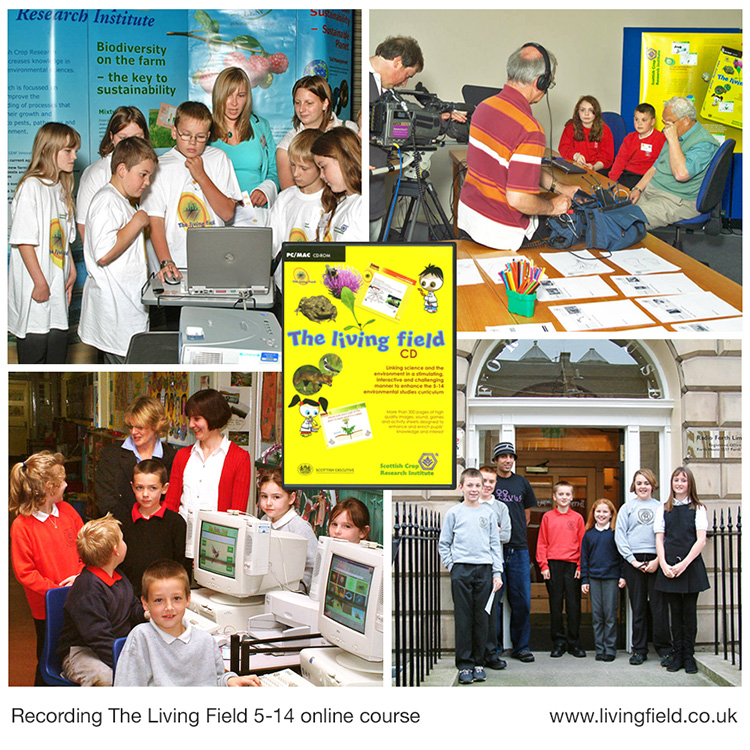
The future ?
The world of OED has changed in the past two decades. Two forces in particular will influence its future. One is the presence and sophistication of online communication and gaming. The other is a raised awareness, particularly among the young, of the perilous state of the world’s ecosystems, especially those dominated by agriculture or forest extraction. Many people with interests in future sustainability expect guidance from science but want to be part of the solution – and the communication and learning must be hi-tech.
And with some coincidence, a new project run by SEDA Land [9] takes off in 2022 that will look at local versus external sourcing of food and other natural products. It will develop through collaboration between a community development trust, scientists (biophysical, social, economic and political) and high-level computer gaming expertise from Abertay University. Yet despite virtual opportunities, contact between people and real plants, their habitats and associated biodiversity will remain crucial. Activities in the Living Field garden ceased during the pandemic – but Living Field’s or something like them are needed everywhere.
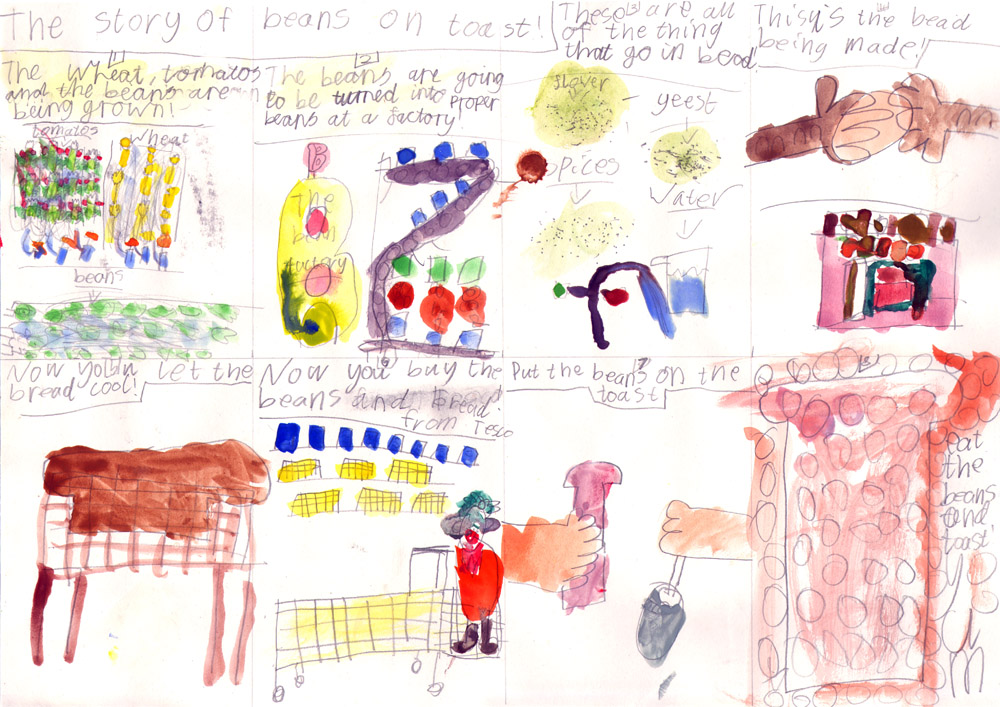
Sources | links | references
[1] Scaling-up : from Cell to Landscape. Society for Experimental Biology Seminar Series 63 (1997). Eds: Van Gardingen PR, Foody GM, Curran PJ. Cambridge University Press. Includes two papers from SCRI (now James Hutton Institute). More on the SEB at The Society for Experimental Biology.
[2] Biotech crop trials in the UK funded 1999-2005. Firbank et al. (2003) Journal of Applied Ecology https://doi.org/10.1046/j.1365-2664.2003.00787.x; Squire et al. (2003) Philosophical Transactions of the Royal Society B https://doi.org/10.1098/rstb.2003.1403
[3] Living Field Garden: The making (conversion of a muddy field) http://www.livingfield.co.uk/living-field-garden/the-making/
[4] From a muddy field: life after The Making, including open days, school visits, the Living Field CD, etc. http://www.livingfield.co.uk/home/about/from-a-muddy-field/
[5] Art, craft and science at the Living Field by Jean Duncan: Sectioned II http://www.livingfield.co.uk/art/jean-duncan/sectioned-ii/, The Beauty of Roots http://www.livingfield.co.uk/people/jean-duncan-artist/the-beauty-of-roots/. See Jean’s Living Field page for a link to a video of an exhibition at the Josef Stefan Institute Slovenia – In the Kingdom of Roots http://www.livingfield.co.uk/people/jean-duncan-artist/. The original microscopic cross section of the root that inspired the artist was provided by Robert Baker of the Department of Botany, University of Wyoming (with thanks).
[6] Beans on Toast – a Liquid Lunch (emphasising its water footprint). By Durham University student Sarah Doherty http://www.livingfield.co.uk/5000-plants/legumes/beans-on-toast/beans-on-toast-a-liquid-lunch/ and Beans on Toast revisited http://www.livingfield.co.uk/food/pulse/beans-on-toast-revisited/
[7] Geological time compressed: the Vegetable Map Made Real http://www.livingfield.co.uk/food/vegetable/vegetable-map-made-real/ and Can we grow more vegetables? http://www.livingfield.co.uk/food/can-we-grow-more-vegetables/
[8] The Living Field CD (and online): ‘more than 300 pages of images, sounds, games and activity sheets linking science and the environment and aligned with the 5-14 school curriculum’. (No longer available.)
[9] SEDA Land is a group within the Scottish Ecological Design Association https://www.seda.uk.net/seda-land. The Editor’s introduction to the project at http://curvedflatlands.co.uk/land/community-mapping-food-climate/
Author/contact: the Editor acknowledges with thanks the opportunity to join the SEB’s Outreach, Education and Diversity focus group. Email: geoff.squire@hutton.ac.uk or geoff.squire@outlook.com.
The phrase ‘different therefore equal’ comes from the title and song of an LP/CD: Seeger, Peggy (1979) Different therefore equal. Folkways Records.
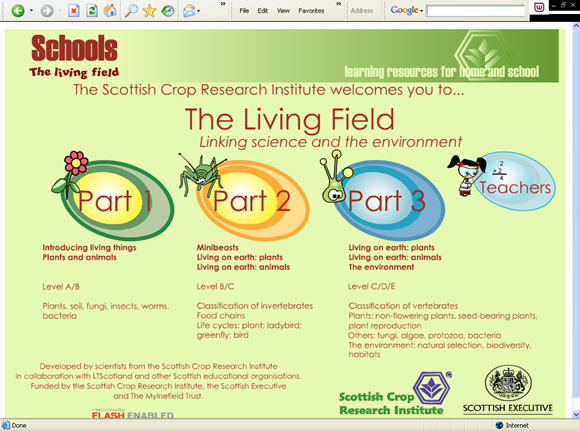
[Page online 14 March 2021 … last edited 22 March]
